Back in 3rd edition, I created my own D&D setting. It wasn’t very good, but I’m still very attached to it, and want to use it as an object lesson in improving. I also want to show people that everything comes from somewhere, and your old work can help become foundational to your new work.
Content Warning: Some of the old text is going to feature some unconscious cissexism and sexism, and I know there are a few unknowingly racist terms that I used.
I mentioned last time that I like giving players handles. In the country now known as Dal Raeda, this took the form of different provinces, with different cultures, but since a game set in Dal Raeda meant I’d be dealing with the lead-in to a potential civil war or players subverting or delaying that civil war (and that seems a big setting piece to deal with in my first game or two), I immediately relocated my focus to the nation next door.
I have said this before to new DMs, and I want to repeat it here: Steal things. The first campaign I ran took the plot from Quest For Glory 1 and as my playgroup matured and adjusted and I learned, I was able to build in the space that structure gave me. Some things from the games happened as-is, some things happened in very different ways, and some things never happened, but I always knew where I could look for the ‘now what’ thanks to having that game history on hand. And the next nation over, where I went for the next game, I stole the plot of David Eddings’ Elenium and Tamuli books, as best I could just-barely remember them.
The thing that appealed to me about these books and that I wanted to use is Eddings’ idea of having knightly orders with different styles and characterisation. In his setting, they were the Pandions, Alcione, Genidian and Cyrinic orders, and they were differentiated from one another mostly by dint of having different names. You got to meet these Knightly Orders in the characters of Sparhawk, and Sparhawk’s Five Interchangeable Friends, who were all different kind of knights and if you haven’t read the books this month you probably can’t remember who was in what order and what makes those orders different.
Now, I enjoyed these books when I first read them, but I first read them when they were almost all the fantasy novels I’d ever read. They were not good books, they’re kind of creepy and misogynist in Eddings’ way where all women are kind of interchangeable nags. D&D also had this handy way to divide up approaches to the world, with the alignment system, so I cut these four orders down to three, and then in an attempt to seem less like I was just stealing names, I renamed some of them a little bit. This gave me three orders, the Pandions (Lawful Good), the Lethinites (Neutral Good), and the Cyrinists (Chaotic Good).
Armed with that basic characterisation I filled in a bunch of other details and they’ve since grown and built around the way the players play and a fourth, hidden order sprang up as well, the Chardunists.
These knightly orders belong in a country known in my world as Symeira, which attentive readers will probably guess I derived from Cimmura, from the Sparhawk books, but also Conan’s Cimmeria. I thought merging two extremely similar looking words would create something wildly different.
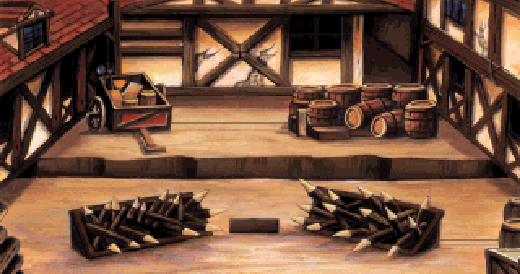
I like this country and these orders, and I like who they’ve become to fit with the three campaigns (each of which ran for a year-plus) I’ve run using them. They are a good narrative tool, and they give players an organisation to belong to that’s also free enough that they can stake out their own space in it. They can be a good knight or a bad knight or they have a story of how they came to be a knight. This is good stuff, and players tend to like it.
Now, there are three reasons to want to rename these orders, or to at least make the names a little different. First of all, there’s just basic reference reasons. I don’t want players who know the Eddings novels to think I mean those Pandions, I mean my Pandions. My Pandions aren’t going to have creepy marriages to beautiful princesses they raised and did I mention those books are bad?
Ownership over the terms is another thing; it’s one thing to use terms from another source, and I could easily argue ‘Pandion’ is not a term that Eddings owns exclusively. There were a bunch of Greek kings with that name, and the term is in the Osprey’s species name. Still, why have the argument? The word isn’t so incredibly great I want to keep using it.
The third reason is identity within the culture. See, remember, this stuff comes from a country that’s next to the country now known as Dal Raeda – but if you heard those names were for things within Dal Raeda, would they fit alongside words like ‘Glotharen’ and ‘Delan’? Would they feel different?
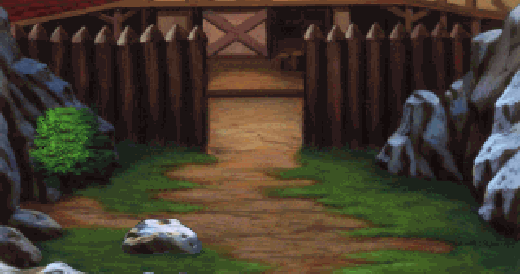
The culture currently-and-soon-formerly known as Symeira fills a large space in my setting. It’s a nation made entirely of city-states and small protectorates, spread across the spaces occupied by other countries, with a highway system connecting them. These cities are old, and mostly known for their infrastructure, and don’t have an adversarial relationship with the nations they’re in.
Now, sometimes this is because the nation whose space the city is in doesn’t really have a conventional ‘government’ as we consider it (like the vast, disconnected non-human cultures of the Corrindale woods), the nation’s government arrived after the city was built (think a bit like London), or the land the city is on was purchased or separated for political reasons (like Vatican City). To maintain trade between these cities, the central city financed the construction of a highway system, which stretches across most non-Dal Raedan nations, and other countries accept the presence because the highways are useful, and the cities are great for trade (and also getting rid of them would be hard).
Now, because these cities are jutted all over the place, they can have names and language that relates more to the country they’re in rather than ‘Symeira.’ The history of what-will-not-be-named-Symeira-much-longer is loose at this point, but I see it as being a nation that came together once the cities were established, rather than necessarily the result of a conventional nation-formation mechanism like a revolution.
For the culture of this nation there’s only one other existing meaningful name, and that’s the name of the Holy City, Olifar. I like Olifar as a name, because it’s both got some air in it, which makes it feel ‘uppity,’ and it’s also lacking in hard edges, suggesting the place isn’t tough. It has an ethereal kind of quality to it, which I like for a city that is primarily the home of a church. Olifar doesn’t have a lot of industry – it’s where the church’s largest and most politically important cathedrals rest, and where the church politics all happen.
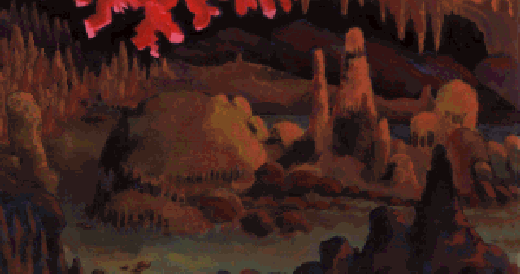
Before I go on, I’d like to talk about why I want this kind of culture in my game world.
This society lets me have something reasonably similar to a typical European Fantasy, where characters are sent from some central location by someone with a generally positive disposition (you know, a decent, if not perfect leader), then travel away from their central location, have their smaller adventure, then return to their source and report on what happened. Travel time gives you a lot of good stuff for conflict and adventure design, and the delay it imposes is also really valuable. It means players spend time moving, dealing with potential ‘wandering’ encounters, having meals, breaking camp, learning how they do the basics of living without the purposelessness of just giving them time to idle around one another.
Now, one of the easy ways to do this is to mimic the British Empire and have people meet the Queen, then get sent to the colonies to deal with things, but that, perhaps to the surprise of a typical gamer, is super colonialist and that’s not good. I don’t want to tell my players to have adventures in this game space, they’re going to have to be complicit in colonialism in the most obvious way.
(Oh, and yes, I know there are some well-actuallying people who’d argue that any game that represents a hierarchy is inherently anti-leftist and therefore capitalist, yes, I’m very impressed, the exits are there, there, and there.)
This nation gives players a generally neutral, not-pointedly-awful place to exist. There are some state-wide institutions, there’s a watch service that isn’t directly comparable to the police, there’s knightly orders doing things like preserving knowledge, copying books and maintaining libraries and creating jobs. There’s still some trappings of feudalism but it’s all Not-Actually-Feudalism, where you have ‘lords’ but they’re appointed and mostly the bad ones exist so players have someone to righteously stab in the face and the reasonable organisation around them can respond to that.
Originally, I learned the idea for this kind of coalition of city-states connected by highways exists, and it’s known as a confederacy, but we’re not going to use that term because I don’t want players to associate this flexible setting piece with, you know, slave-keeping assholes.
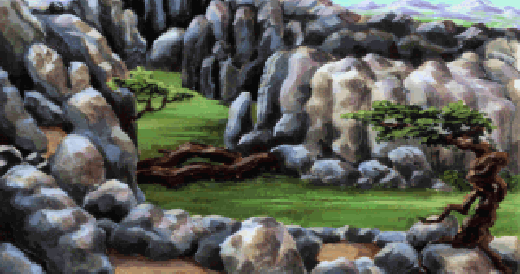
I did a lot of testing of these names, and eventually I went to a randomiser and punched in some syllables, then sorted through the results for a bit. The main thing I did here was exclude names; the names of the original settings, the names of the orders I couldn’t use, and also syllables that felt like they belong to Dal Raeda (so less focus on ‘B’ and ‘Nd’ sounds). I also rejected a lot of names that felt strongly like they belonged to a specific culture in the real world – a number of names that turns out were common-ish Iraqi names, for example.
First of all, we’re going to rename ‘Symeira’ and ‘Symeiran.’ They’re now Ereshan and the city is Eresh. The group of cities is called the Eresh Protectorate, which I like because it both implies the origin of the coalition, and makes it clear that there’s some degree of protection offered from the center. Eresh also stands apart from Dal Raeda, and they have some similar sound to them (the R and E) but they don’t necessarily feel like they’re just variants on the same basic language. Ironically, these two nations share a language now (because trade), but that’s not how they started.
Eresh the city, by the way, is right next door to the province of Danube
That’s the place they come from, now let’s talk about the Knightly Orders and how they differ from one another.
First, our Lawful Good cavalry knights, the former Pandions are now the Tzarumite order. I like how this name has a hesitation at the start; you pause slightly to say it, because the Tz sound isn’t very quick or natural in English. You know there’s going to be people in-universe who call them Zarumites, and it’s probably seen as kinda dickish.
The Tzarumites are our regimented, well-off order; the ones who have the most inherited property and land, the most overseers, and the one with a deliberate integration with the Watch in Eresh cities. They’re also the order known for cavalry troops and an infamous shocking charge. If you pay a Tzarumite, you probably have access to some money, or grew up working around people who had money, and were being sponsored, adopted, or somehow helped along by people who wanted you in the order.
The Tzarumite colours are black and purple, and their common weapons are longsword and lance.
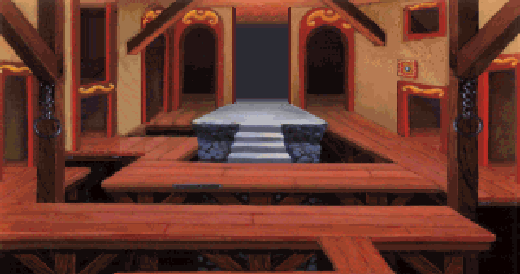
Since I made the Lethinite order pretty much up out of whole cloth, they just stay as they are. They’re the academics, and they’re the ones who interface the most with Church laws and libraries. They’re basically your nerd knights, doing things like transporting valuable books to places so they can be restored, or sealing away dangerous tomes that have powerful spells in them. Lethinites are also known for information-based warfare – they scout, they make tactical decisions or strategic plans, and they’re the ones who make the best impromptu fortifications.
The Lethinite colours are silver and rose, and their common weapons are the longbow and longspear.
The rowdy Cyrinist order are almost completely unchanged, they’re just now called the Raguzans. Raguzan knights are the least likely to have landed titles; they’re often ‘knights of convenience,’ or people who distinguished themselves in battle heroically or in a militia situation, given a knighthood that they can’t pass on to their children and given just enough authority to run around as dangerous free agents on the battlefield. Raguzan knights tend to have other jobs, they tend to be working class, and the Raguzans are known for their skill in animal-keeping. If you see a warhound, battle boars, or war dire ferrets on the battlefield, they’re with the Raguzans. Raguzans make decisions quickly and decisively. They’re also the experts in demolitions and breaking sieges , which naturally is a point of tension with Lethinites.
The Raguzan colours are blue and gold, and their common weapons are two-handed axes, hammers, and swords.
Chardunists are the final order, and since I made up this name myself years ago, I don’t feel it needs to change. I like it as a sort of semi-Babylonian feel, which fits their origin. Chardunists started as the Olifar Inquisition, whose duty was to root out psychics in the church territories. Psionics was regarded as a ‘soul sickness’ and the Chardunists became students of it, then experts on it, until eventually, Chardunists who were psychic became influential enough to change the direction of the order. Chardunists have over time slipped into the shadows and become a lesser-known fourth order of knights, who mostly do covert operations, which they use to scoop up psychic individuals and hide them from the remaining inquisition arms of the church.
The Chardunist colours are grey and jade, and their common weapons are daggers, brass knuckles, bottles and someone else’s fists.
This was a long walk! But there was a lot of thought put into making these setting elements engaging and fun while also having distinct names that don’t directly overlap with one another. If you say any of these names aloud, you’re not likely to mix up which of them you’re saying, which is a good test of a decent name.
Also, hopefully, players are thinking of how they’d want to fit into these knightly orders, or not.
All these images are from the VGA Remake of Quest For Glory I, a game that heavily influenced the creation of this setting, even if I let almost none of the Cole’s taste for Whacky Humour infiltrate my game.